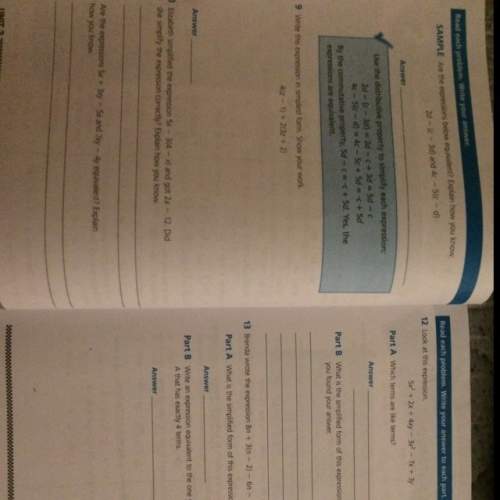
Mathematics, 21.05.2021 17:20 dakshshberry
1. The U. S. Energy Information Administration claimed that U. S. residential customers used an average of 10,290 kilowatt hours (kWh) of electricity this year. A local power company believes that residents in their area use more electricity on average than EIA's reported average. To test their claim, the company chooses a random sample of 153 of their customers and calculates that these customers used an average of 10,586kWh of electricity last year. Assuming that the population standard deviation is 2509kWh, is there sufficient evidence to support the power company's claim at the 0.05 level of significance? State the null and alternative hypotheses for the test.
2. The U. S. Energy Information Administration claimed that U. S. residential customers used an average of 10,290 kilowatt hours (kWh) of electricity this year. A local power company believes that residents in their area use more electricity on average than EIA's reported average. To test their claim, the company chooses a random sample of 153 of their customers and calculates that these customers used an average of 10,446 kWh of electricity last year, Assuming that the population standard deviation is 2509 kWh, is there sufficient evidence to support the power company's claim at the 0.02 level of significance? Compute the value of the test statistic.
A. We reject the null hypothesis and conclude that there is insufficient evidence at a 0.02 level of significance to support the power company's claim that the mean amount of electricity for their residents is more than the national average.
B. We fail to reject the null hypothesis and conclude that there is insufficient evidence at a 0.02 level of significance to support the power company claim that the mean amount of electricity for their residents is more than the national average.
C. We reject the null hypothesis and conclude that there is sufficient evidence at a 0.02 level of significance to support the power company's claim that the mean amount of electricity for their residents is more than the national average.
D. We fail to reject the null hypothesis and conclude that there is sufficient evidence at a 0.02 level of significance to support the power company's claim that the mean amount of electricity for their residents is more than the national average.

Answers: 1


Another question on Mathematics

Mathematics, 21.06.2019 17:30
Which of the following is true about the graph of f(x)=7^x. select all that apply. a= it intercepts the x axis b=it intercepts both axis c=it intercepts neither d=it intercepts the y axis
Answers: 1

Mathematics, 21.06.2019 17:40
The graph of h(x)= |x-10| +6 is shown. on which interval is this graph increasing
Answers: 2

Mathematics, 21.06.2019 18:00
When lulu enlarged her drawing of a rabbit, the enlarged picture appeared to be distorted. which statement about the transformation applied to her drawing is true?
Answers: 2

Mathematics, 21.06.2019 18:00
Based on the graph, what is the initial value of the linear relationship? a coordinate plane is shown. a line passes through the y-axis at -2 and the x-axis at 3.
Answers: 3
You know the right answer?
1. The U. S. Energy Information Administration claimed that U. S. residential customers used an aver...
Questions

Mathematics, 17.02.2021 18:40


Mathematics, 17.02.2021 18:40

Business, 17.02.2021 18:40


Mathematics, 17.02.2021 18:40

Arts, 17.02.2021 18:40



Mathematics, 17.02.2021 18:40





Mathematics, 17.02.2021 18:40

Mathematics, 17.02.2021 18:40

Mathematics, 17.02.2021 18:40


Biology, 17.02.2021 18:40

Business, 17.02.2021 18:40




